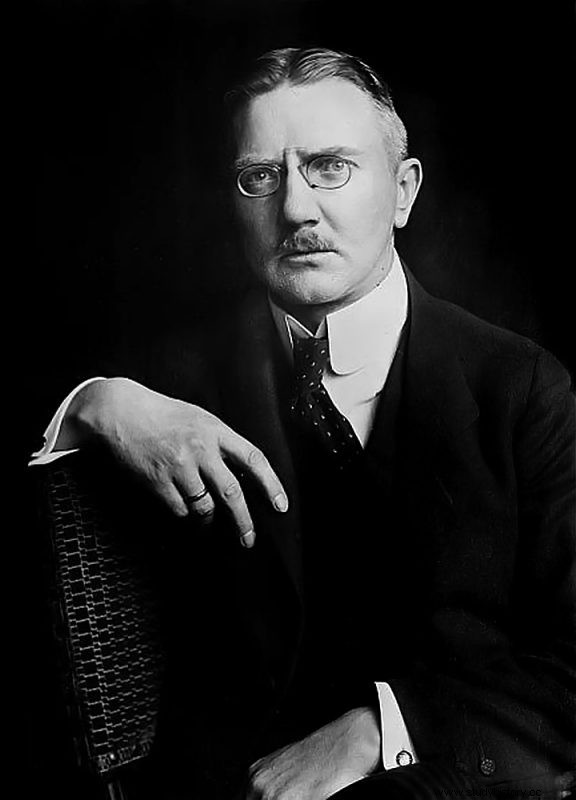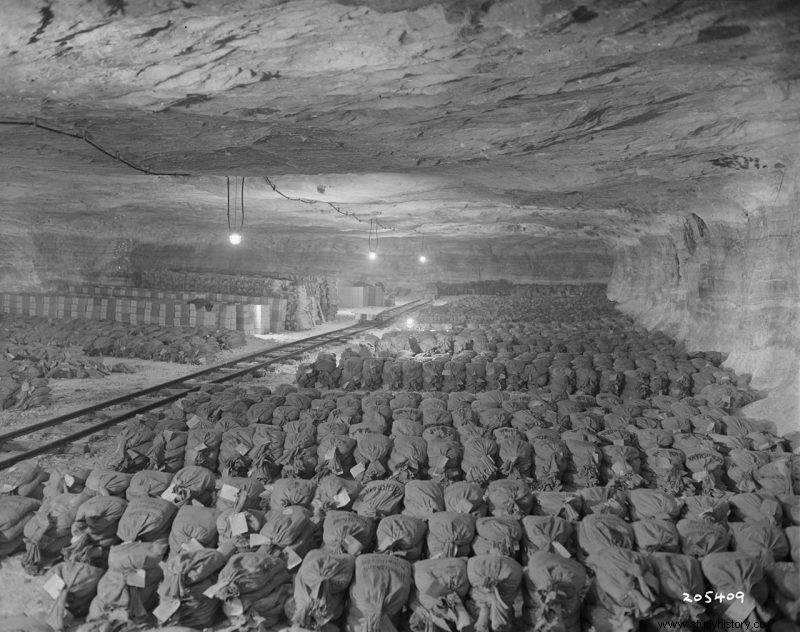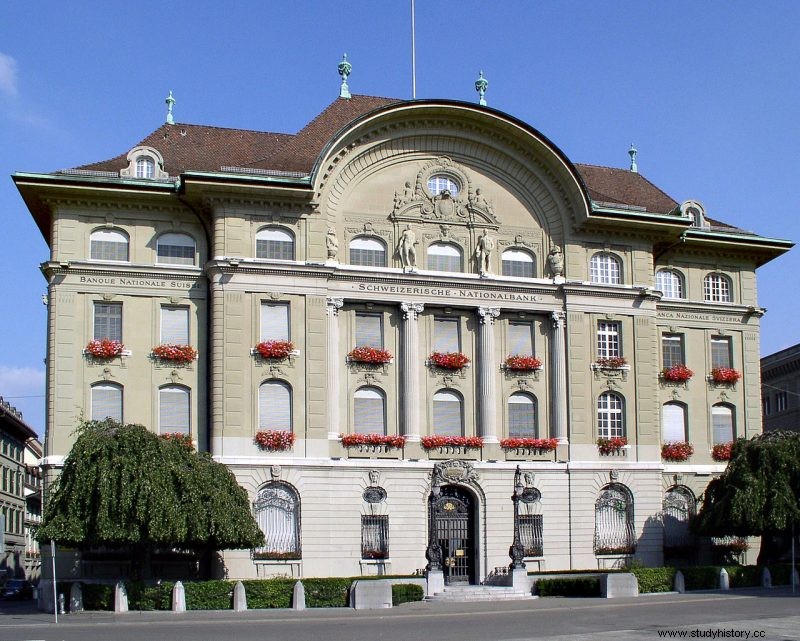Much has been said about how it was possible that the Germany of 1933, where the army was reduced to 100,000 troops, without tanks or heavy artillery, where the navy was mere coastguards, the economy was very affected by the crisis of 1929 and where society it was so divided that it was a rare week when there were no political assassinations in the streets that it was able to launch a war in 1939 and stay in it until the final defeat in 1945.
The factors were numerous, but all of them would not be important without having a basic element:gold . More specifically, gold and the collusion of Swiss bankers and their lack of scruples.
Germany had been an industrial and military power since its creation under the Prussian crown of the Hohenzollerns in 1871. Such a power that it was able to put the other great powers of the world on the ropes during the First World War. After that war and the implementation of the Versailles peace, that power vanished.
Despite being a highly industrialized country, Germany lacks any raw materials necessary for industrial production except for its extensive sources of coal. Oil, rubber and iron had to be imported from third countries at a high cost in foreign exchange.
During the years of peace, between 1933 and 1939, the situation was not desperate, since it was easy to exchange the gold in the reserve of the Reich bank for different convertible currencies. Despite spending at such a rate that reserves would be depleted by 1939-40, the Nazi German regime continued to spend at such a level that half of public spending was devoted to military spending. The situation eased somewhat after the annexation of Austria and Czechoslovakia in 1938 and 1939 respectively and the incorporation of their central bank reserves into German reserves.
Despite all this, the finance minister and director of the Reichsbank, Hjalmar Schacht warned in a memorandum on January 7, 1939 that Germany was bankrupt, on the verge of suspension of payments. Schacht tried to pressure Hitler to change economic policy if he didn't want Germany to fall, but the Führer responded with dismissal. 
The looting of gold by the Nazis
When the world war broke out on September 1, 1939, the financing of the conflict became a matter of crucial importance to the regime. Germany played everything on one card . She needed to conquer as much territory as possible in the shortest possible time. Although the German tactics of mobile warfare were the most advanced in the world for their time, their army was not materially up to par with the others. Furthermore, Germany only had enough ammunition for two weeks of war.
Neutral countries undertook not to allow the payment of raw materials with gold in addition to not selling weapons to belligerent countries yes This forced the Nazis to territorial expansion.
Germany found itself with a major problem in terms of supply, since it needed, above all, large quantities of iron from Sweden, which it could not pay for with Reich marks or with gold from the central bank. Iron traffic was secured in the winter of 1940 with the capture of Norway and its port at Narvik, from which Swedish iron was shipped. The next step was to finance this traffic of raw materials into the heart of the Reich.
During the Western campaign in 1939 and 1940 central banks and private bank vaults were prime targets. The amounts of gold looted in Poland, Holland, Norway, Denmark, Belgium, Luxembourg and France were considerable, but since they could not be used directly, they were useless if someone did not convert them into convertible currency.
Gold mined from western countries
- 1938 – Austria – 83 tons
- 1939 – Czechoslovakia – 3.5 tons
- 1940 – Holland – 132 tons
- 1940 – Luxembourg – 4 tons
- 1940 – Belgium – 180 tons
- 1943 – Italy and Albania – 65 tons

This is where Switzerland played a central role.The Swiss central bank accepted the exchange of gold from Germany in exchange for Swiss Francs , which were accepted in international markets. Truckloads of gold were trucked to Switzerland, where they were deposited at the central bank. There they were exchanged for Swiss Francs to be able to buy from suppliers of raw materials, which could keep the money or deposit it in Swiss accounts, where it could be converted back into gold.
The question of the origin of Nazi gold was problematic in Switzerland. The directors of the bank raised the question of the legitimacy of the purchase of that gold. After some deliberation, the bank decided that if no more gold was exchanged than Germany was considered to possess before the war, then there would be no problem. To avoid any doubt, it was even proposed to melt down the ingots coming from Germany to camouflage the trail. Although the issue was discussed, this could have affected Switzerland's financial credibility, so it was rejected.
Switzerland, much more than a neutral country
Switzerland's neutrality in World War II is an important idea for Swiss national identity. Although the intention of the Swiss people is not in doubt, today it is known that many Swiss authorities became rich thanks to dealings with the Nazis.
From 1940 to April 1945, shipments of gold to Switzerland to be exchanged for foreign currency were constant, reaching their maximum in 1943, when 120 tons of gold were sent from Berlin. The director of the German central bank himself in these years, Walter Funk, declared that Germany could not afford to suspend the shipment of gold to Switzerland even for two months . It is estimated that 345 tons of gold were shipped to Switzerland during World War II.

The gold purchase business is estimated at around 15,000 million dollars at the current exchange rate. But it was not only traded in gold. Although it was not allowed by international law, Swiss factories produced and sold weapons to Hitler's Germany.
After World War II, the Allies decided to punish Switzerland for its collaboration. In 1946 the United States invited representatives of the Swiss country to a conference to clarify the situation. After 68 days of negotiations, the conference ended with an agreement. The punishment would be limited to a fine of 20% of the value of the gold purchased , which was seen as a great victory for the Alpine country's diplomacy.
